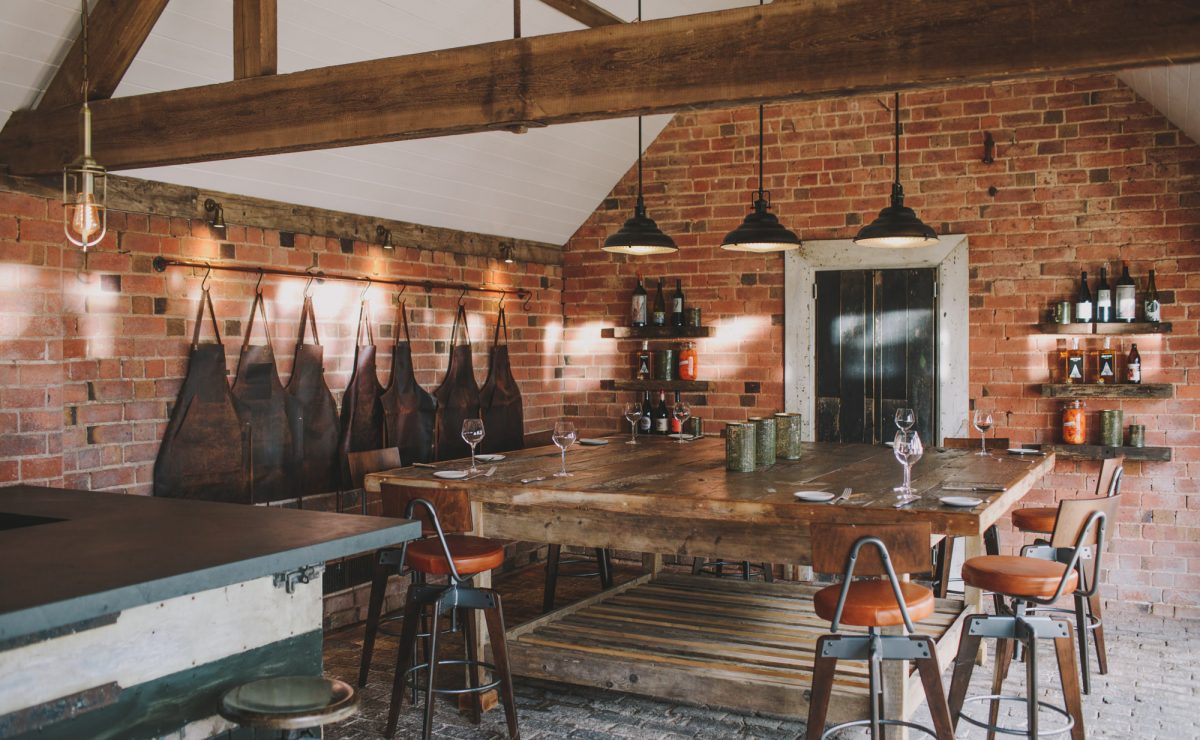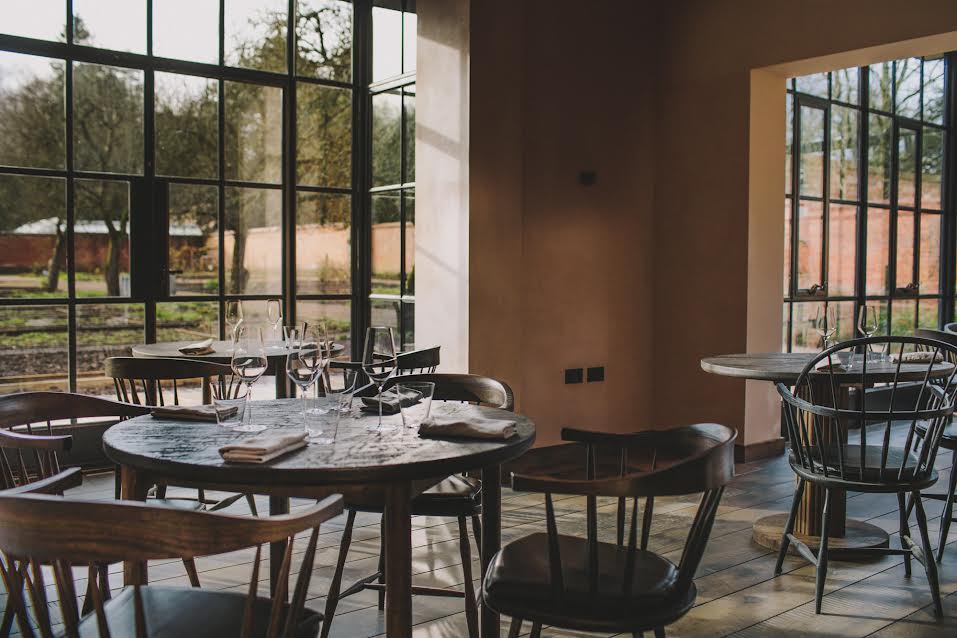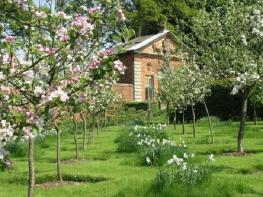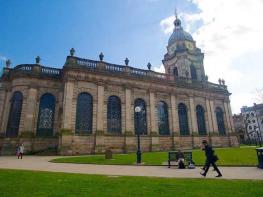Beautiful Hampton Manor is set in 45 acres of mature woodland, only minutes from Birmingham's…
Brueton Park and the Grand Union Canal

7 miles (11.3kms)
About the walk
This enjoyable circuit starts in Brueton Park and encompasses a stroll along the Grand Union Canal, before finishing in Malvern Park. Brueton Park was gifted to Solihull in 1944 by the prominent local businessman and councillor Horace Brueton. It was formerly attached to Malvern Hall, and the two parks were linked in 1963. Today the two distinct parks form one large park to the southeast of Solihull town centre. The narrow strip of land follows a roughly U-shaped layout and covers an area of approximately 130 acres (53ha).
Brueton Park
Brueton Park incorporates a local nature reserve, and many species of mature trees including oak, ash and conifers can be found. Brueton Park Lake, which was formed by damming the local River Blythe, can be found at its southern end. Wildlife enthusiasts will find much of interest, with abundant birdlife on and surrounding the lake. The Parkridge Nature Centre in the middle of the park was opened in 2002 by the Warwickshire Wildlife Trust, when the park also received Local Nature Reserve status in recognition for its importance to wildlife. Here you will find an interesting conservation interpretation and education centre which provides workshops, talks and demonstrations, as well as a restaurant.
Malvern Park
By contrast, Malvern Park is a formal municipal town centre park, and throughout the year the floral displays are magnificent. It was originally laid out by the Urban District Council in 1926 on land partly forming a section of the estate of Malvern Hall and partly purchased from local farmers (Malvern Park Farm). The buildings of Malvern Hall, dating from about 1690 and a favourite subject for the painter John Constable, are now home to St Martin's Independent School for Girls.
A statuesque gift
Malvern Park Avenue is dominated by a magnificent statue, the Prancing Horse and Man. It was the work of Vienna-born Joseph Edgar Boehm in 1874, and is thought to depict Alexander the Great and his famous horse Bucephalas. It was purchased at auction by Captain Oliver Bird, of Bird's Custard fame, for his garden in Solihull, but he donated it to the Solihull Council in 1945 and it was placed in Malvern Park in 1953, the Coronation year.
Walk directions
Leave Brueton Park via exit the driveway. Go left through a cul-de-sac, then cross the B4025. Follow the pathway into Marsh Lane and continue to a roundabout. Turn right into Avenbury Drive. Go right through kissing gate before No. 16. Cross the A41 then go through a kissing gate and take the path on the right of a hedge, via a kissing gate. Follow the path over several fields, then go right through a kissing gate into woodland. Follow a path via a kissing gate. Pass farm buildings and leave via three kissing gates. Continue across a paddock via two kissing gates and cross Ravenshaw Lane.
Continue ahead through a kissing gate, walking to the right of a hedge over fields. Go through two further kissing gates, then left through a kissing gate onto a track leading to the canal. Cross a bridge to descend to tow path. Go left beneath the M42 and Barston Lane. Exit at bridge No. 75, via a stile. Cross a bridge and stile onto a footpath towards Grove Farm. Past the farm, go through a kissing gate and along a driveway. Go left over two stiles, and follow a footpath and lanes, skirting Knowle. Through a handgate, the footpath crosses a cul-de-sac onto a path beyond No. 15. At Keepers Cottage, bear right on the lane towards Warwick Road.
Cross the road and follow the footpath towards Longdon Hall. Turn right at a junction, following the hedge towards the golf course. Cross this to reach a kissing gate into Lady Byron Lane. Go left, then right into Browns Lane and right into Smiths Lane. After about 325yds (297m) go right over a stile and footbridge into a garden, then over a stile into farmland. Keep to the right of two fields via a stile, then cross a footbridge over the M42 via two stiles. Continue ahead over a stile and footbridge over the River Blythe. Cross another stile and follow a fenced footpath to the right of a field, then go over stile onto Lovelace Avenue.
Turn left, crossing Widney Manor Road into Widney Lane. Go beneath a railway bridge, turn right into Alderminster Road then left into Libbards Way. Turn right into Fielding Lane and join Solihull Way. Pass Hillfield Hall, cross Alderminster Road and continue ahead on Fielding Lane, which becomes a walking/cycling route. Go beneath the railway bridge towards Church Hill Road. Bear left, then right up the path beside No. 57. At the end of the path turn right, rejoining Church Hill Road. Pass St Alphege's Church and school.
Turn right to enter Malvern Park on a path between Malvern and Cedarhurst. Turn right before reaching ornate gate piers, passing to the right of tennis courts, then bear left into Malvern Park and follow a tarmac footpath until you come to Parkridge Nature Centre. Pass to the right to reach Brueton Park Lake, then turn left and walk along the lakeside to return to the car park.
Additional information
Field footpaths and tow paths, many stiles
Parkland, canalside and residential areas
Off lead along tow path, otherwise under control
OS Explorer 220 Birmingham
Brueton Park car park
In Brueton Park
WALKING IN SAFETY
Read our tips to look after yourself and the environment when following this walk.
Find out more
Also in the area
About the area
Discover West Midlands
After Greater London, the West Midlands is the UK’s biggest county by population, and after London, Birmingham is the UK’s largest city. There’s a lot to seek out here – it has a vibrant culture, with exceptionally good nightlife. Coventry used to be more important than Birmingham, until the 18th century when the Industrial Revolution started and Brum forged ahead.
Apart from Lady Godiva, Coventry is best known for its cathedrals. The medieval parish church became a cathedral in 1918, but the Blitz on Coventry in 1940 left only the spire and part of the walls. After the war, it was decided to build a new cathedral alongside linked to the ruins.
Dudley was one of the birthplaces of the Industrial Revolution, and this history is reflected in its architecture and the Black Country Living Museum, a recreation of an industrial village, with shops and a pub, cottages and a chapel. Stourbridge is also worth a visit, mainly due to its involvement in glassmaking, which has been going on since the 17th century, and is still a part of the town’s culture; there’s a glass museum and a bi-annual glass festival.
Nearby stays
Restaurants and Pubs
Nearby experiences
Recommended things to do
Why choose Rated Trips?
Your trusted guide to rated places across the UK
The best coverage
Discover more than 15,000 professionally rated places to stay, eat and visit from across the UK and Ireland.
Quality assured
Choose a place to stay safe in the knowledge that it has been expertly assessed by trained assessors.
Plan your next trip
Search by location or the type of place you're visiting to find your next ideal holiday experience.
Travel inspiration
Read our articles, city guides and recommended things to do for inspiration. We're here to help you explore the UK.













